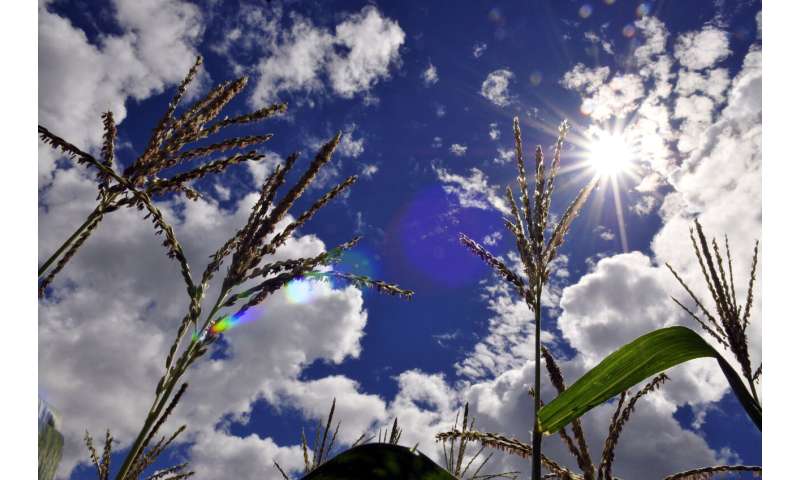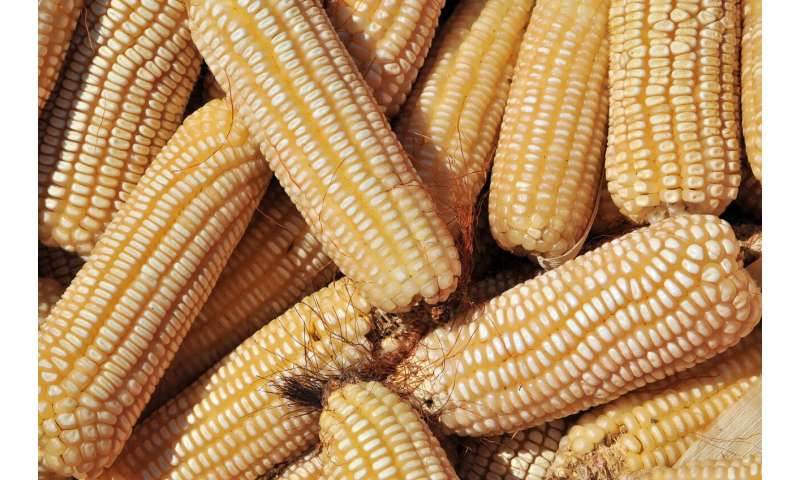
Farmers in Colombia's maize-growing region of Córdoba had seen it all: too much rain one year, a searing drought the next. Yields were down and their livelihoods hung in the balance.
The situation called for a new approach. They needed information services that would help them decide what varieties to plant, when they should sow and how they should manage their crops. A consortium formed with the government, Colombia's National Cereals and Legumes Federation (FENALCE), and big-data scientists at the International Center for Tropical Agriculture (CIAT). The researchers used big-data tools, based on the data farmers helped collect, and yields increased substantially.
The study, published in September in Global Food Security, shows how machine learning of data from multiple sources can help make farming more efficient and productive even as the climate changes.
"Today we can collect massive amounts of data, but you can't just bulk it, process it in a machine and make a decision," said Daniel Jimenez, a data scientist at CIAT and the study's lead author.
"With institutions, experts and farmers working together, we overcame difficulties and reached our goals."
During the four-year study, Jimenez and colleagues analyzed the data and verified developed guidelines for increased production. Some farmers immediately followed the guidelines, while others waited until they were verified in field trials. Farmers that adopted the full suite of machine-generated guidelines saw their yields increase from an average of 3.5 tons per hectare to more than 6 tons per hectare. This is an excellent yield for rainfed maize in the region.
The guidelines also substantially reduced fertilizer costs, and provided advice on how to reduce risks related to variation in the weather patterns, with an emphasis on reducing the negative impacts of heavy rainfall.
Researchers from FENALCE co-authored the study, which is part of a Colombian government program aimed at providing farmers with options to manage both weather variability and climate change.
If one farmer provides data to a researcher it is almost impossible to gain many insights into how to improve management," said James Cock, a co-author emeritus CIAT scientist. "On the other hand, if many farmers, each with distinct experiences, growing conditions, and management practices provide information, with the help of machine learning it is possible to deduce where and when specific management practices will work."
Year-on-year, maize yields in the study region vary by as much as 39 percent due to the weather. Small farmers in the past had to rely on their own knowledge of their crops and accept blanket recommendations often developed by researchers far removed from their own milieu. The study shows that combining farmers' knowledge with data on weather, soils and crop response to variables, farmers can, at least partially, shield their crops against climate variability and stabilize their yields at a higher level.

From farm to algorithm
In Córdoba, FENALCE, which compiles information on maize plantations, harvests, yields and costs, set up a web-based platform to collect and maintain data from individual farms. Local experts uploaded information on soils after visiting farms at various stages of the crop development, while IDEAM, Colombia's weather agency, supplied weather information from six stations in the region. This allowed researchers to match daily weather station information with individual fields and the various stages of the growing season.
The researchers used machine learning algorithms and expert analysis to measure the impact of different weather, soil conditions and farming practices on yields. For example, they noticed that improving soil drainage to reduce run-off likely reduces yields when rainfall is lower, whereas doing the same in areas with a lot of rain boosts yields. This shows advice on crops needs to be site-specific.
The study demonstrated that the amount of phosphorus applied, the seed rate, and field run-off capacity had a major impact on yield levels. Understanding the effects of the inputs on the crops allowed experts to guide small farmers towards the best practices to use in order to produce high, stable yields.
The upshot for farmers is that most of the management practices the study recommends do not require major investments, showing that food security and livelihoods can be improved—at least in this case—without major expenditures.
Human learning, too
Initially, CIAT and FENALCE designed a smartphone application for farmers to record soil and other data in the field but corn growers did not adopt the app. Although the web-based platform was used to compile the information, researchers and technical assistants had to visit the farms to help the farmers collect the data. This presents challenges for scaling up this type of exercise.
Nevertheless, researchers see opportunities for increased data collection by smallholders, both by directly working with farmers and through technology. Future projects could incorporate apps already developed and used by farmers. Furthermore, data collection by a whole array of technologies ranging from satellites, drones and low-cost sensors, deployed in fields, coupled with combine harvesters that accurately record grain yield at a micro-scale are all becoming realities in the developing world.
"Much of the hardware and software for the future collection of data may well come when the private sector becomes involved in developing sustainable systems for capturing, analyzing and distributing information," said Jimenez. "In the future we can envisage every field being carefully characterized and monitored, turning the landscape into a whole series of experiments that provide data which machine learning can interpret to help famers manage their crops better."
Copyright:https://phys.org


No comments:
Post a Comment